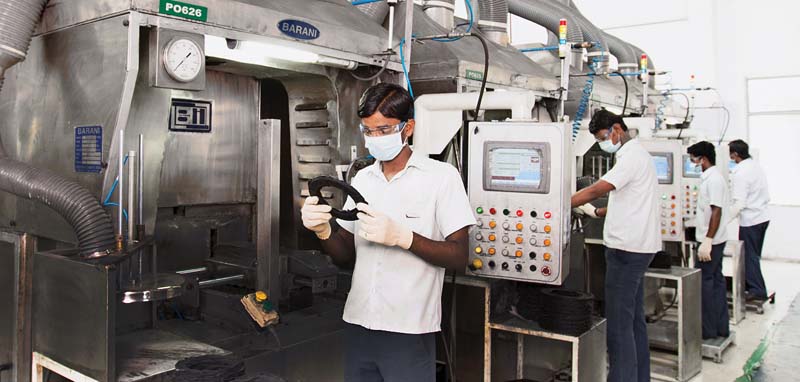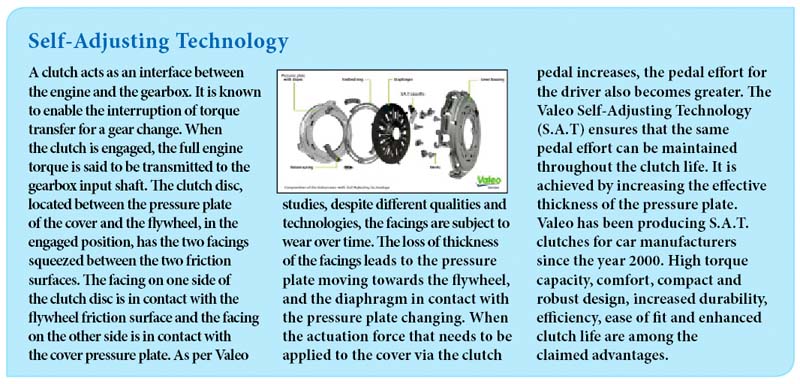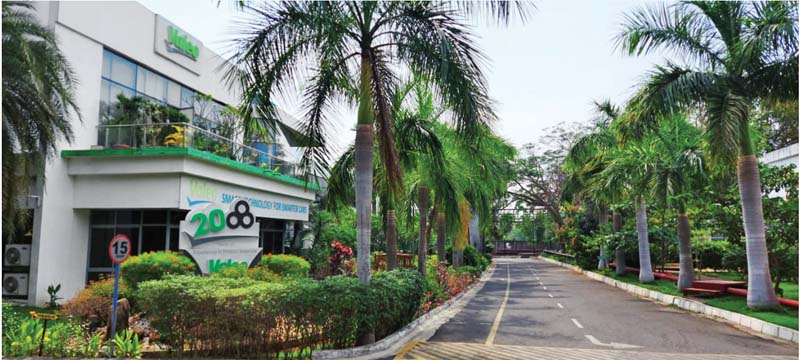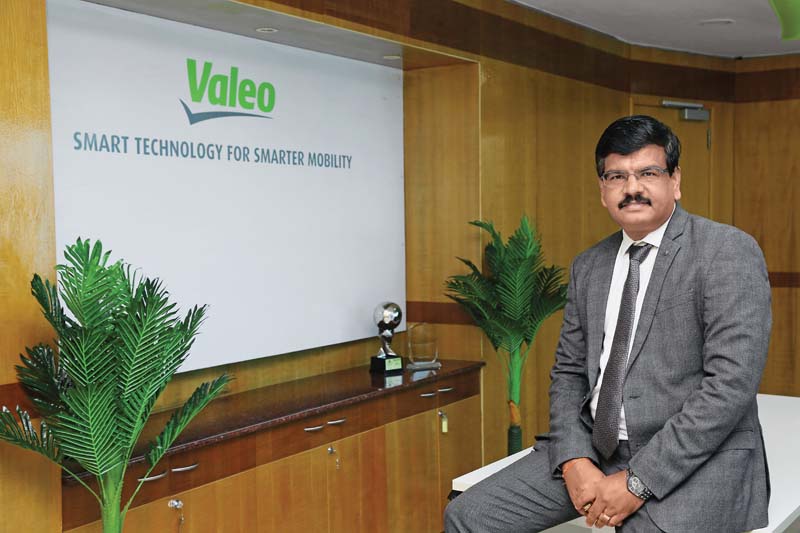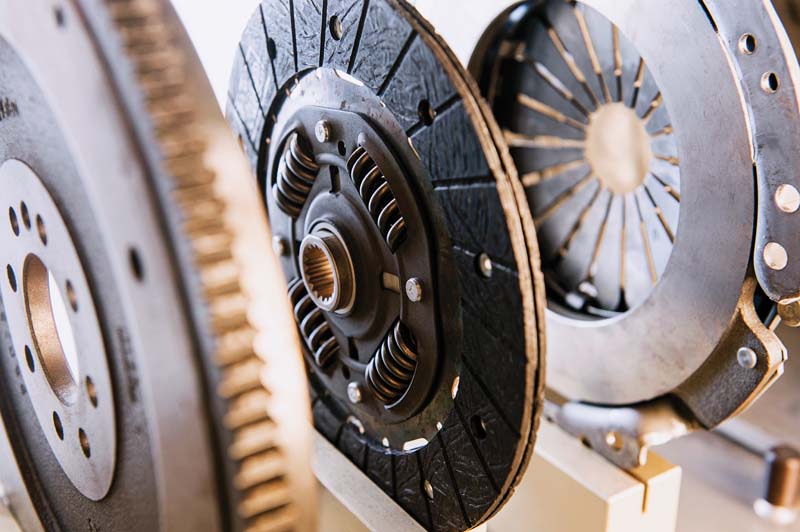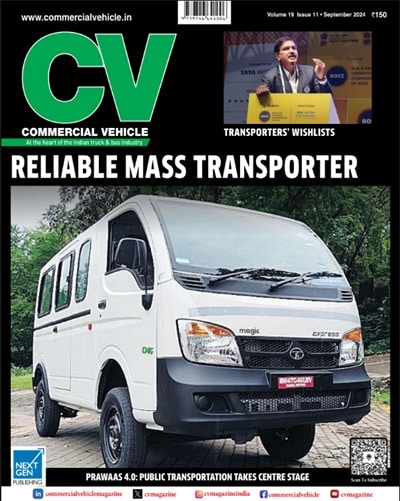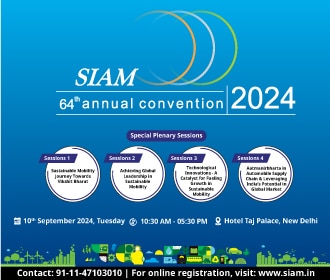Valeo Friction Materials India hit the bull’s eye with its export strategy. Ashish Bhatia looks at the all round efforts undertaken to reach new markets despite a raging pandemic.
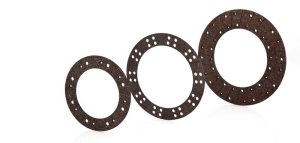 The outbreak of the pandemic aggravated the situation and impacted global trade equations. Indian auto component manufacturers, however, in the first half of the fiscal 2020-21, for the first time, witnessed a trade surplus. In effect, the positive trade balance meant that exports outweighed imports. Auto component exports, however, declined by 23.6 per cent to Rs.39,003 crore (USD 5.2 billion) in H12020-21 from Rs.51,028 crore (USD 7.4 billion) in H12019-20. Amidst the trend, Valeo Friction Materials India (VFMI) proved to be an exception as it hit the bull’s eye. In line with its export strategy, the company’s total export sales accounted for seven per cent of its total annual business in the year 2019.
The outbreak of the pandemic aggravated the situation and impacted global trade equations. Indian auto component manufacturers, however, in the first half of the fiscal 2020-21, for the first time, witnessed a trade surplus. In effect, the positive trade balance meant that exports outweighed imports. Auto component exports, however, declined by 23.6 per cent to Rs.39,003 crore (USD 5.2 billion) in H12020-21 from Rs.51,028 crore (USD 7.4 billion) in H12019-20. Amidst the trend, Valeo Friction Materials India (VFMI) proved to be an exception as it hit the bull’s eye. In line with its export strategy, the company’s total export sales accounted for seven per cent of its total annual business in the year 2019.
Valeo’s counter-strategy to steer past the slump in the domestic market had the company, in 2020, enter new territories such as South America, the Balkans, SAARC nations and the ASEAN countries. Establishing its business in new territories, VFMI was able to achieve a significant milestone of 145 per cent growth in exports. It accounted for 19 per cent of the overall annual business. The company attributes the success to key initiatives like strategic pricing of the products, effective negotiation, submitting the samples to prospective customers, and rapid testing and validation. The company credits the growth to the proactive and effective planning of deliveries to circumvent the logistic and supply chain challenges, efforts to reach out and re-establishing connections with the existing network that enabled the company to leverage new business opportunities. The company especially focussed on identifying new customers in new geographies besides allocating resources for participation in the overseas automobile and components exhibitions to create an awareness around its products and next-generation technologies.
Focussed on reducing carbon emissions
VFMI’s success in exports, in a volatile environment, is centred around the group’s strong focus on reducing carbon emissions. The company manufactures an estimated 14 million facings per year. It caters to the two-wheeler and three-wheeler segment on one end of the spectrum and the off-highway segment on the other end of the spectrum. In the middle, it also caters to both the passenger vehicles and commercial vehicles segments as part of the entire automotive universe. Deemed as the first auto components manufacturer to partner customers, from concept to completion, the company is claimed to have channelised 12 per cent of its OE sales powered by a 500+ workforce back into Research and Development (R&D) activities.
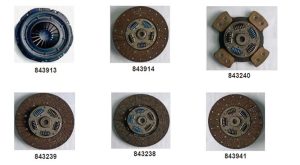 In product-specific measures, to keep a low carbon footprint, the company relies on fibre glass-based technology. It is known to use a range of materials free from asbestos, lead, organic solvents, ceramic and aramid fibre. The Valeo G5 clutch facings are claimed to offer a longer lifespan and are known to comply with European regulations. The high-performance clutch facings are claimed to be resistant to high temperatures and are manufactured in strict compliance with the global standardisation of raw materials and manufacturing processes to ensure qualitative consistency. Known as the G5 clean technology, it is said to have made VFMI a leader in dry friction clutch facings. The company also manufacturers transmission clutch facings for its segments besides brake friction materials that the company manufactures for the off-highway segment.
In product-specific measures, to keep a low carbon footprint, the company relies on fibre glass-based technology. It is known to use a range of materials free from asbestos, lead, organic solvents, ceramic and aramid fibre. The Valeo G5 clutch facings are claimed to offer a longer lifespan and are known to comply with European regulations. The high-performance clutch facings are claimed to be resistant to high temperatures and are manufactured in strict compliance with the global standardisation of raw materials and manufacturing processes to ensure qualitative consistency. Known as the G5 clean technology, it is said to have made VFMI a leader in dry friction clutch facings. The company also manufacturers transmission clutch facings for its segments besides brake friction materials that the company manufactures for the off-highway segment.
S.A.T clutch set
The company launched the Self-Adjusting Technology (S.A.T) clutch set for Jeep Compass 2.0 Diesel in February 2021. It was an opportunity to tap the potential of the Jeep being exported to many right-hand drive markets like the United Kingdom, Australia, New Zealand, Brunei, Japan, Indonesia, Nepal, and Thailand and the company couldn’t let go of it. VFMI is known to have priced the clutch aggressively as compared to OEs in a bid to gain market share. With a claimed superior quality and durability, the company launched the product for the Independent Aftermarket (IAM). The vehicle population of 1,00,000 presented a considerable opportunity.
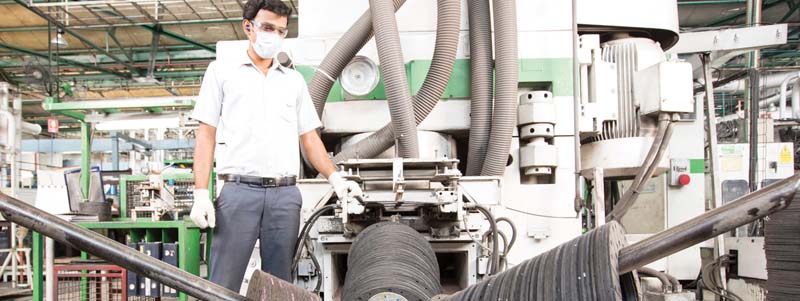 Prior to it, in 2020, the company also launched seven new tractor parts for models from Mahindra, Farmtrac, Escort tractors and International tractor aimed at addressing the duty cycles that involve stop and go actions. It is claimed to have addressed the associated clutch wear. The clutch sets are aimed at addressing issues like a sticky clutch, soft clutch, hard clutch, high engine revs when the clutch is engaged, a slipping clutch, additional noise, the lack of pedal ‘give’, or the frequent needs for replacement. As an OE supplier to the agriculture segment, the company bundles the clutch sets with cover assembly, driven plates and release bearings. The innovation cycles have led to the company pool consisting of over 50 parts. The company also became the first IAM supplier for the Maruti Suzuki Super Carry as a testimony to its business interest in the light commercial vehicle segment. VFMI also became the second supplier after OEs to BharatBenz. It added three parts to the portfolio to tap the segment. These included clutch cover, clutch disc and the clutch set.
Prior to it, in 2020, the company also launched seven new tractor parts for models from Mahindra, Farmtrac, Escort tractors and International tractor aimed at addressing the duty cycles that involve stop and go actions. It is claimed to have addressed the associated clutch wear. The clutch sets are aimed at addressing issues like a sticky clutch, soft clutch, hard clutch, high engine revs when the clutch is engaged, a slipping clutch, additional noise, the lack of pedal ‘give’, or the frequent needs for replacement. As an OE supplier to the agriculture segment, the company bundles the clutch sets with cover assembly, driven plates and release bearings. The innovation cycles have led to the company pool consisting of over 50 parts. The company also became the first IAM supplier for the Maruti Suzuki Super Carry as a testimony to its business interest in the light commercial vehicle segment. VFMI also became the second supplier after OEs to BharatBenz. It added three parts to the portfolio to tap the segment. These included clutch cover, clutch disc and the clutch set.
The aftermarket
The company strives hard to maintain the same quality grade in its aftermarket offerings. It is capable of doing so without any additional lead time in tooling. The company is also focused on adding moulded clutch facings to the product mix. Moulded clutch facings are known to be suited to segments associated with higher rpm engines. They are claimed to possess higher physical strength like burst, shear, cross braking in comparison to other moulded materials. These are often recommended for tractor and trailer applications as an example. A look at the product mix reveals product grades like F400, F450, F510 UL, and F510 MCC UL to name a few.
Industry Talk
Building A Green Value Chain
In an industry talk session, Jayakumar G, Group President India, Valeo India Pvt. Ltd. speaks to Ashish Bhatia on the changing customer perception driving changes.
Q. How are you contributing to the reduction of CO2 emissions and the development of safer driving? Which products in the portfolio are contributing to this vision?
A. 94 per cent of our turnover comes from technologies reducing CO2 emissions and improving safety. 10 years ago, Valeo committed to making CO2 emissions reduction its growth driver. Thanks to more than Euro 10 billion that we have invested in electrification, we have become the world leader in the field. Both in low and high voltage. Nearly 60 per cent of our sales now stem from technologies that contribute to reducing CO2 emissions. As a pioneer and world number one in vehicle electrification, Valeo boasts the widest technologies portfolio to support this revolution. Technologies that cover all segments and all use cases, from affordable hybrid solutions to the most powerful systems.
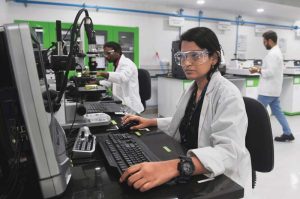
Valeo develops electrification technologies and efficient thermal management systems for EVs but also works on weight reduction and efficiency improvements to reduce CO2 emissions. Valeo is committed to achieving carbon neutrality by 2050 and reach 45 per cent of its objective by 2030. In concrete terms, this means that by 2030 we will have nearly halved our carbon footprint across our entire value chain, be it emissions from our plants, our manufacturing processes and our energy supply, or the emissions from our suppliers and the end-use of our technologies.
“Valeo is committed to achieving carbon neutrality by 2050 and reach 45 per cent of it obJective
by 2030. in concrete terms, this means that by 2030 we will have nearly halved our carbon footprint across our entire value chain.”
Improving safety on the roads is certainly the other major challenge of mobility. For a long time, Valeo has developed technologies able to help the driver to perceive its environment. Our driving assistance technologies currently equip one in four new vehicles worldwide. We were pioneers in this field, with the invention, 30 years ago, of the first ultrasonic sensor for parking assistance. Since then we have developed the broadest sensor portfolio on the market including ultrasonic sensors, radars, cameras and the one and only LiDAR on the automotive market in series production and fitted in series production vehicles.
Another major lever for improving safety on the roads is visibility systems, that encompass lighting and or wiping. We are the world leader in this field too. One figure sums up the challenge: 72 per cent of fatal road accidents take place at night when visibility is most impaired. The headlights we currently sell today allow you to drive with full headlights on in all circumstances, without dazzling the drivers coming in front. The smart lighting systems will go soon far beyond simply improving visibility. They will completely exceed their original functional scope to provide more safety, assistance and driving comfort, drawing the curves of the road, announcing the next bend, reproducing road signs, or even drawing a protected passage on the road to invite the pedestrian to cross.
Q. Elaborate on the development of the advanced range of facings for clutches (including moulded facings), tractor brakes and friction washers?
A. Increasing emission norms, better roads, growth in infrastructure and increased drive comfort demands by the end customers constantly challenge the development of facings. Increasing emission norms, reduction in packaging space and higher engine speeds in passenger and commercial vehicle applications demand high burst, stable friction at elevated temperatures and low-density clutch facings. For tractor dry disc brakes, high friction facings support the driver to brake with a lesser pedal effort, in turn, reducing driver fatigue and thereby increasing on-field productivity. These are some of the recent developments in the facings for clutches and brakes.
Q. What is the G5 clean technology and have there been any recent iterations made to it that you can share?
A. In the friction facings, Generation 5 (G5) technology water is used as a solvent. No other organic solvents are used. This helps in CO2 reduction in the manufacturing process. This is a good example of how Valeo’s commitment to environmental protection is now embodied in the extensive product and process design expertise used to eliminate dangerous materials from production processes. The Chennai plant is the second facility in the world to implement this process. Valeo implemented this process at least 10 years ahead of the relevant global regulations. In performance terms, occupants of vehicles adopting the G5 clutch will experience enhanced levels of driving comfort when changing gear due to the suppression of engine vibrations and the extremely smooth, judder-free, clutch action.
Q. Staying on brakes, how have you optimised associated emissions for different duty cycles?
A. In brakes, we operate in the tractor segment only. Stable high friction even at elevated temperatures reduces the stopping distance. This increases the driver’s confidence on brakes and avoids partial braking during the drive, which in turn saves fuel and hence reduces emissions. When the confidence on brakes is higher, tractor drivers tend to avoid half-clutching, which in turn reduces fuel consumption.
Q. How are you prioritising the go-to-market strategy which means catering to different technologies (manual to automatic/single to dual-clutch) and vehicle segments on a regional basis across your key target markets? Exports are known to have significantly contributed to the overall revenue.
A. Valeo has development and manufacturing sites distributed across countries. This is based on regional demands and the availability of competent manpower. In India, the Automotive market is dominated by manual transmission – across different formats of vehicles – three-wheelers, passenger cars, SUV, MUV, micro to large trucks, buses and farm equipment. Hence, our Chennai facility leads dry facings for manual transmissions and supplies facings to Valeo, LuK, ZF, Eaton, Exedy and other domestic clutch makers. We also export friction facings to the global market from Chennai. Exports have grown significantly in 2020 for us despite the covid pandemic, which has contributed to the revenues for Indian operations. The development of facings for wet applications happens in Europe.
Q. How are you leveraging the Chennai R&D centre as a global hub with learnings and resultant efficiencies introduced over the pandemic-marred fiscal?
A. Valeo’s Chennai R&D centre caters not just to local developmental needs, but also the needs of Valeo’s global sites. Our Chennai R&D centre provides engineering support across varying domains – Mechanical, Simulations, Electronics, Software & Vision systems. Our R&D centre in Chennai was operationally supporting both local and global engineering development despite the pandemic induced uncertainties. Exposure to local and global projects across continents and varying products, processes has helped our engineering teams to develop skills and standardise development activities. This has helped the R&D centre face the pandemic. Local market demands drive the need for building competencies locally. For example, a manual transmission will last longer in India than in other countries. This makes India, and hence Chennai, the ideal centre to grow dry friction development – for Indian and for Global needs.
“Increased awareness on Safety and increasing regulatory demands will necessitate the growth of active safety functions including Advanced Driver Assistance Systems (ADAS) and the Drive monitoring Systems.”
Q. How has your exposure to the OE and aftermarket changed over the last five to eight quarters? What is the revenue mix?
A. Valeo has been a strong player in the aftermarket since 2012 and the business has been consistently growing with double-digit Compounded Annual Growth Rate (CAGR) for the last four years. Covid-19 pandemic and the lockdowns had resulted in a slowdown in the automotive market in 2020 both in the OE and aftermarket. The market is expected to recover in the coming months.
 Q. What is the outlook for the foreseeable future?
Q. What is the outlook for the foreseeable future?
A. India is already amongst the top four automotive markets in the world. Changing customer perception on safety, health and hygiene in the post-pandemic world will drive the changes in the Indian automotive industry. Two-wheelers and three-wheelers will see a rapid shift towards electrification in the next five years. In passenger vehicles, ICE will continue to coexist with EVs for some time, but with additional measures including hybridisation – increasing their efficiency and reducing emissions. This will give the space for homogeneous transformation in the industry – ICE to EV transformation.
Increased awareness on safety and increasing regulatory demands will necessitate the growth of active safety functions including Advanced Driver Assistance Systems (ADAS) and the drive monitoring systems. Overall, in the next decade, we will see a major transformation in the automotive industry, which will be greener, safer and smarter. We will also see many new segments emerge for the first and last mile connectivity and delivery.
Also read, Success Mapping



